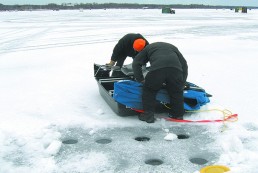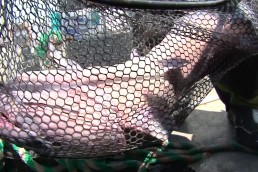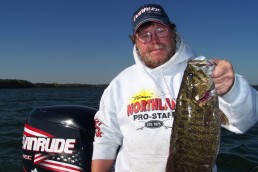What Do Fish Want?
SHARE THIS POST
You and a friend head out onto a frozen lake, hoping to catch some perch from the cold, clear waters. You get holes drilled and your electronics show some fish near bottom. What’s next? It seems like a simple thing to start with your favorite presentation, but what happens if that doesn’t work?
In this article, I’ll pass along some ideas that detail what you should do when you first encounter a school of perch. Get this approach right, and you’ll make a big step toward more consistent results.
Don’t assume anything
I know ice anglers. They are often a complacent bunch. They will try the same tired method in the same manner of presentation, and hope it works. Often they don’t even change lures from one year to the next. They seem to think that perch will either bite or they won’t and you can’t do anything about it. Wrong!
Opposites attract
When two anglers are teamed up and ready to work a spot, I recommend using two radically different presentations to begin with. One should be geared toward actively biting fish and the other should appeal to fish that are somewhat reluctant to bite.
Extreme example
Here is an illustration showing what I am suggesting. The first angler uses a compact spoon style lure tipped with a wiggler as bait. An example is the size 2 or 3 Swedish Pimple. This lure gets to bottom fast, can be worked aggressively, and is a proven way to catch active fish or those that can be triggered.
The second angler uses a weighted nymph style trout fly with a very small split shot sinker on the line about a foot above the fly. As bait, tip the nymph with a single spike (maggot).
Work it out
The person using the spoon lure should jig it upward a foot, then allow it to fall back downward. When the lure is sitting at the bottom of its fall, shake the rod to lightly to “dance” the lure slightly as though it were a living, squirming creature.
Are you enjoying this post?
You can be among the first to get the latest info on where to go, what to use and how to use it!
The angler using the trout fly should use a more relaxed action. Raise the rod tip up a foot, then drop it back to the starting position. The fly will respond by moving upward, followed by a slow drift back toward bottom. This “finesse” presentation will often appeal to sluggish fish.
Two more examples
Another perch favorite is to tie on a brightly colored 1/16-ounce jig and use it to present a lip-hooked shiner minnow. I like to work the range from two to four feet off bottom with this rig.
The counter presentation to the jig and minnow is the same size jig dressed with a thin, soft, plastic worm or grub imitator. This rig does not need any live bait, but if you cannot develop confidence in a bait-less presentation; use a single “spike” on the hook. Work this rig by dropping it flat to bottom and jigging it lightly to stir up some silt. Next raise it up a foot and hold it still for half a minute or so. After that, drop it back to bottom and repeat the sequence.
The life-like quiver
Here is a trick to get a lifelike action from your soft plastics: rest your rod horizontally across the mouth of an open five-gallon plastic bucket, or place the rod in a holder. Once the jig and soft plastic grub have stabilized at one foot off bottom, tap the rod tip lightly with a finger. This is enough to cause the plastic bait to “quiver” lightly like a pulsing live creature. That is often just the trigger that turns a “looker” into a “biter.”
Fishing solo
I’ve passed along details about how extremes of presentation can help you determine what will trigger fish on a given day. Believe me, you just don’t know what will work best until you try them both. Obviously, you stick with the method that works best. With two anglers working, you’ll find the best way faster.
With one angler you could set up a jig and minnow, then put that rod in a holder to “fish itself.” You are then free to work the finesse presentation on a separate rod. You’ll soon find that you really have to pay attention to one rod when you are working a school of fish by yourself. That second rod will often be a distraction that causes you to miss some fish.
In closing, I’ll say that you should go into an ice fishing trip with a positive attitude, and be willing to experiment with presentations. There are ways to catch perch that are not actively smashing your baits. You just have to become familiar with your alternatives and be willing to try them.
MWO
SHARE THIS POST
Did you enjoy this post?
You can be among the first to get the latest info on where to go, what to use and how to use it!
Ray Hansen
MidWest Outdoors works with more than 200 outdoor experts each year, who contribute articles based on their areas of expertise. MidWest Outdoors magazine offers more fishing and hunting articles than any other publication!




